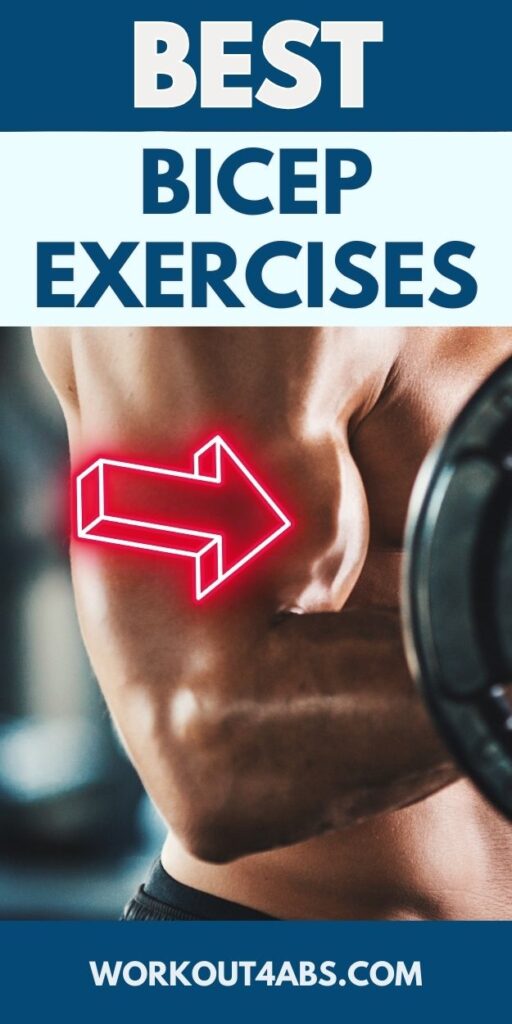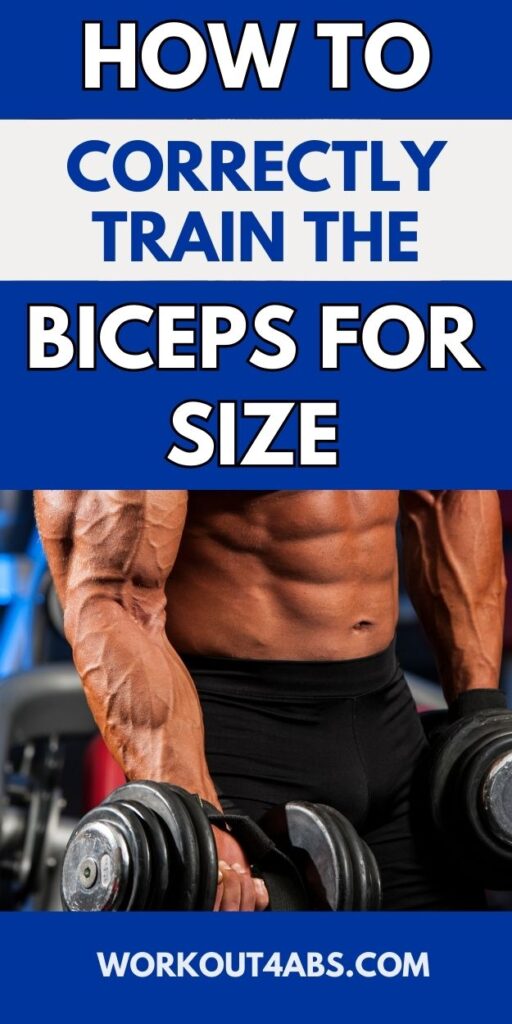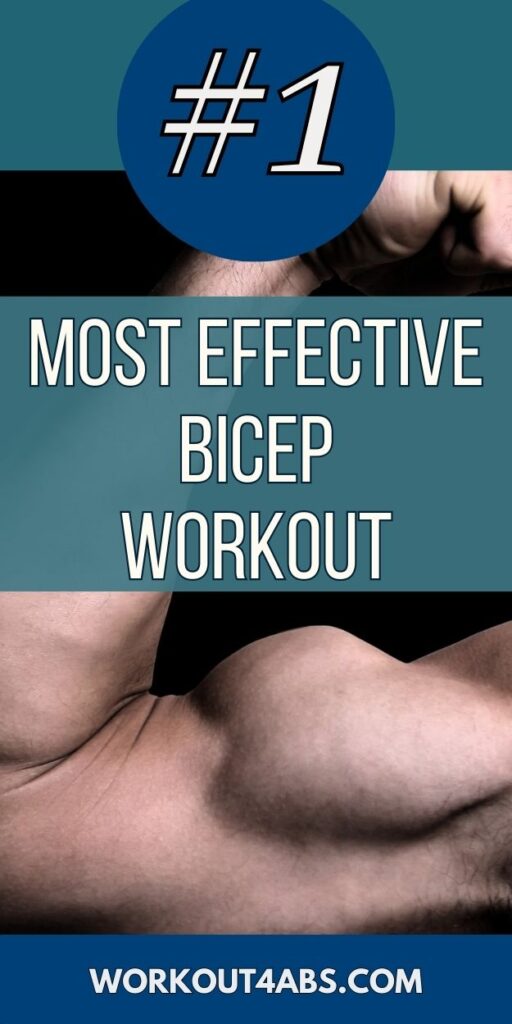Here is the best bicep exercise when it comes to achieving impressive bicep muscle size. You’re going to see the science and techniques behind the single best exercise for maximizing bicep growth. Get ready to redefine your arm gains and unveil those coveted bulging biceps.
The #1 Best Science-Based Biceps Exercise You’ll Ever Do (Plus 90° Rule Explained)
If you enjoyed these tips, please save this pin to your Pinterest Board.

Max Contraction Max Insertion of the Biceps
To effectively target the bicep muscles and achieve maximum contraction and extension, it’s important to understand the anatomy of the biceps brachii muscle and how its origin and insertion points work. The biceps brachii is a two-headed muscle located on the front of your upper arm. It consists of a long head and a short head, both of which have distinct points of origin and insertion.
- Anatomy of the Biceps Brachii:
- Origin Points:
- The long head of the biceps originates from the supraglenoid tubercle of the scapula (shoulder blade) within the shoulder joint.
- The short head of the biceps originates from the coracoid process of the scapula, which is also within the shoulder region.
- Insertion Point:
- Both the long and short heads of the biceps converge to insert into the radial tuberosity of the radius, which is a bone in your forearm.
- Origin Points:
- Max Contraction:To achieve maximum contraction of the biceps, you want to flex your elbow and bring your forearm towards your upper arm. This is commonly known as a bicep curl. Here’s how to do it:
- Stand or sit with your back straight and your arms fully extended downward, holding a weight (dumbbell, barbell, or resistance band) in your hands with an underhand grip.
- Slowly curl your forearm upward while keeping your upper arms stationary. Focus on squeezing your biceps as you lift the weight.
- At the top of the movement, your forearm should be close to your bicep, and you should feel a strong contraction in your bicep muscle.
- Max Extension:Achieving maximum extension for the biceps involves stretching the muscle by extending the elbow. Here’s how to do it:
- Stand or sit with your back straight, and let your arms hang naturally at your sides.
- If you’re using a barbell or dumbbell, hold it with an overhand grip.
- Slowly extend your forearm downward while keeping your upper arm stationary. This is commonly referred to as the “negative” or eccentric phase of a bicep exercise.
- At the bottom of the movement, your arm should be fully extended, and you should feel a stretch in your bicep.
It’s essential to maintain proper form and control throughout these movements to avoid injury and to effectively engage the bicep muscles. Additionally, varying your exercises and angles can help you target different parts of the biceps for a well-rounded workout. Always start with a weight that allows you to perform the exercises safely and with proper form, and progressively increase the resistance as you become stronger.
If you enjoyed these tips, please save this pin to your Pinterest Board.

Bicep Supination
Bicep supination is a key concept in understanding how the bicep muscles function during exercises like the bicep curl and how it can contribute to building bicep muscle mass. Supination refers to the movement of the forearm and hand that results in the palm facing upward or forward. In the context of bicep curls, bicep supination plays a significant role in maximizing bicep engagement. Here’s how it works:
- Basic Anatomy:
- The biceps brachii muscle is a two-headed muscle located on the front of your upper arm.
- It has two primary functions: flexing the elbow (bringing your forearm closer to your upper arm) and supinating the forearm (rotating the palm upward).
- Bicep Supination in the Bicep Curl:
- When you perform a bicep curl, you start with your arms fully extended and your palms facing forward (in a neutral position).
- As you lift the weight (dumbbell, barbell, or resistance band) by bending your elbow, the biceps primarily contract to flex the elbow.
- At the same time, you can actively supinate your forearm, which means you rotate your palm to face upward as you lift the weight.
- Importance of Bicep Supination:
- Actively supinating your forearm during the curl shifts the emphasis of the exercise to the bicep muscles. This is because the biceps are not only responsible for elbow flexion but also for supination.
- When you supinate, you engage the short head of the biceps more, creating a peak in the muscle, which is often referred to as the “bicep peak.”
- This full range of motion, including both elbow flexion and forearm supination, allows for maximum activation of the bicep muscles, contributing to better muscle development.
To effectively utilize bicep supination during a bicep curl:
- Start with your palms facing forward (neutral grip) at the bottom of the movement.
- As you lift the weight, consciously rotate your palms upward (supinate) while simultaneously flexing your elbows.
- Maintain control throughout the entire range of motion, and focus on squeezing your biceps at the top of the curl when your palms are facing your shoulders.
Remember to use proper form and a weight that you can control to prevent injury. Incorporating variations of the bicep curl, such as hammer curls (which involve a neutral grip and less supination), can also help target different parts of the biceps for a well-rounded bicep workout.
Sliding Filament Theory
The concept you’re describing relates to the fundamental principle of muscle contraction and extension, known as the sliding filament theory, which is crucial for understanding how muscles work. Let’s clarify this concept in the context of the biceps and muscle contraction.
Sliding Filament Theory:
- Muscles contract when the individual protein filaments within the muscle fibers (actin and myosin) slide past each other.
- Muscle contraction occurs when myosin heads attach to actin filaments and pull them toward the center of the sarcomere (the basic unit of muscle contraction).
- Muscle extension or relaxation happens when the myosin and actin filaments slide back apart.
Max Contraction and Extension:
- To achieve maximum contraction in a muscle, you need to create a situation where the actin and myosin filaments overlap as much as possible. This is typically accomplished by flexing the muscle, which shortens the sarcomeres, allowing for maximum overlap.
- Conversely, to achieve maximum extension (full relaxation) in a muscle, you need to create a situation where the actin and myosin filaments are pulled apart and have minimal overlap. This is typically achieved by extending the muscle, which lengthens the sarcomeres.
Biceps and Max Extension:
- You correctly mentioned that the biceps originate from the shoulder and insert on the forearm. To achieve maximum extension (full relaxation) of the biceps, you need to fully extend the elbow joint.
- When the elbow is completely extended, the distance between the biceps’ origin (near the shoulder) and insertion (on the forearm) is maximized.
- In this fully extended position, the biceps muscle is stretched to its maximum length, and the actin and myosin filaments are pulled apart as much as possible, leading to muscle relaxation.
So, you’re absolutely right that with the biceps, achieving maximum extension occurs when the elbow is fully extended. Conversely, to achieve maximum contraction of the biceps, you need to perform actions like bending the elbow (flexion) to shorten the muscle and bring the forearm closer to the upper arm. This concept applies not only to the biceps but to all muscles in the body, where maximum contraction and extension are achieved by altering the length of the muscle fibers through joint movement.
If you enjoyed these tips, please save this pin to your Pinterest Board.

Home › Aesthetic Body Plan ›Best Bicep Exercise